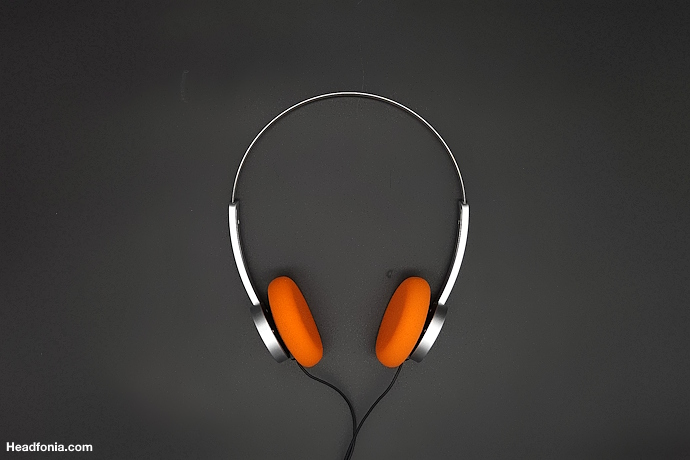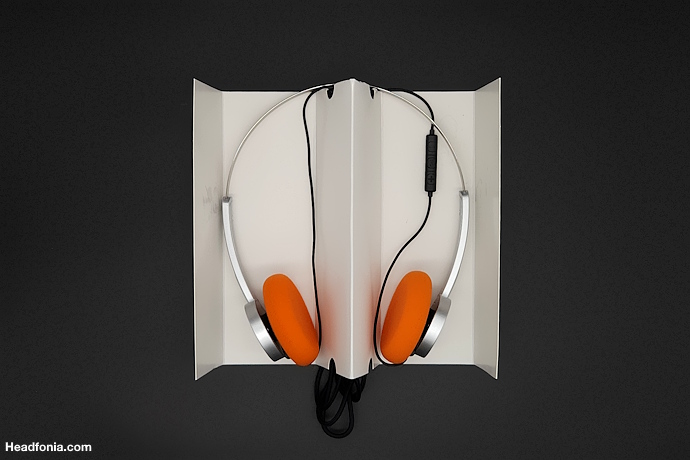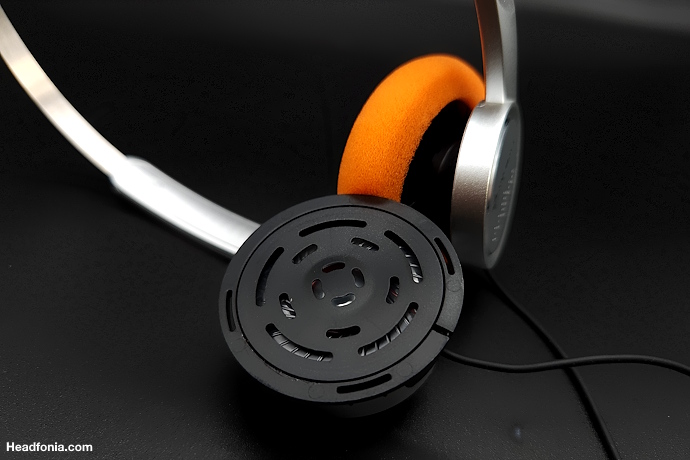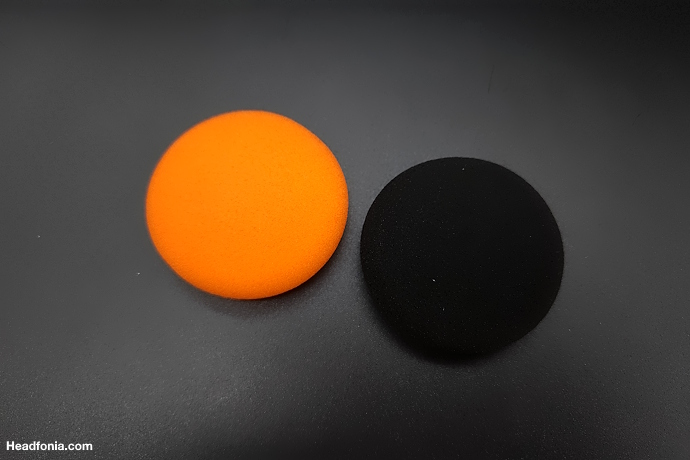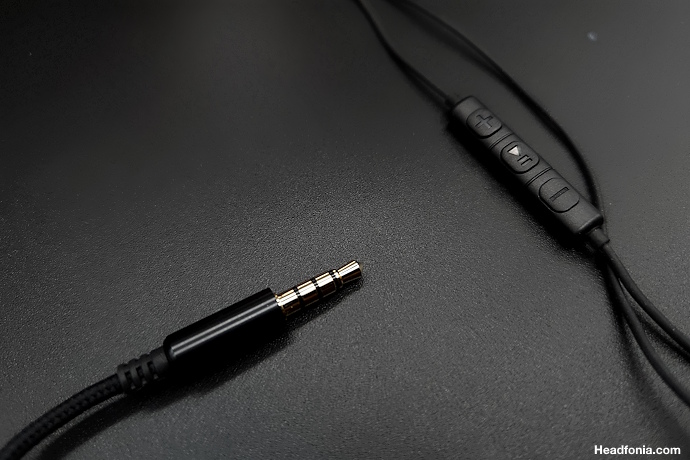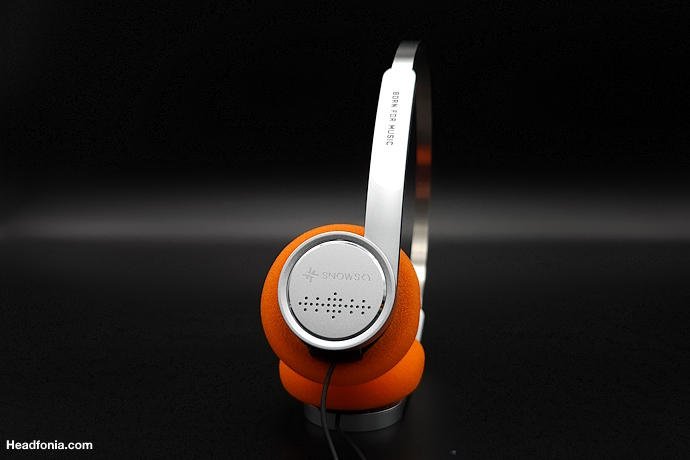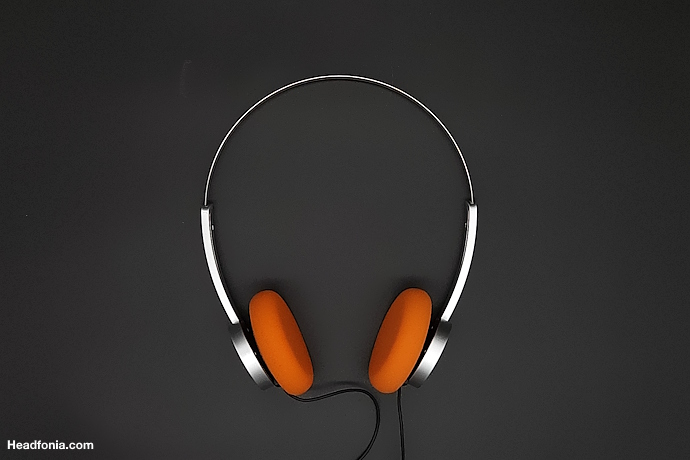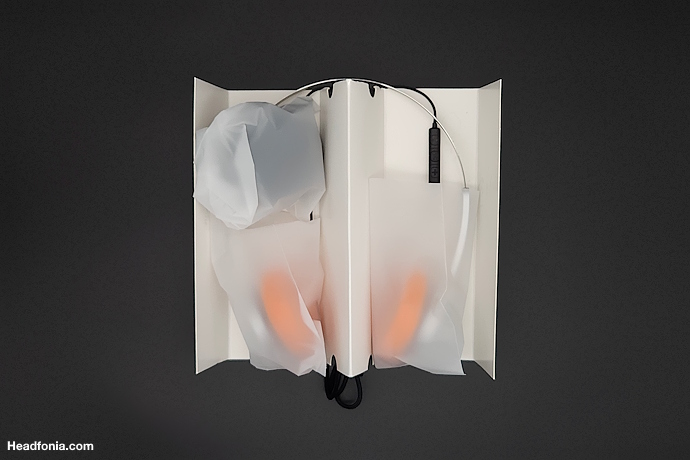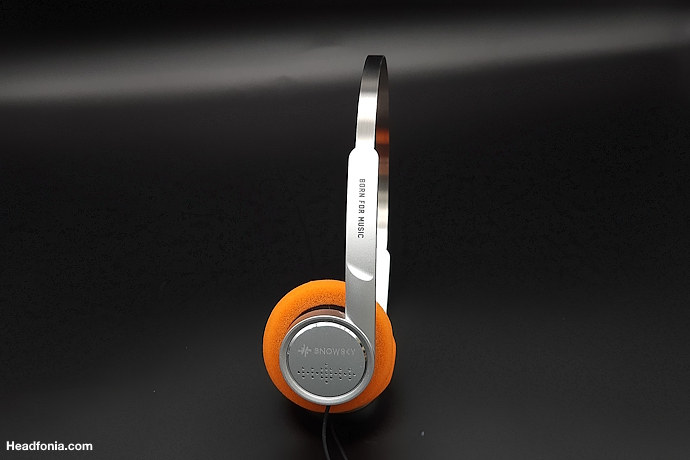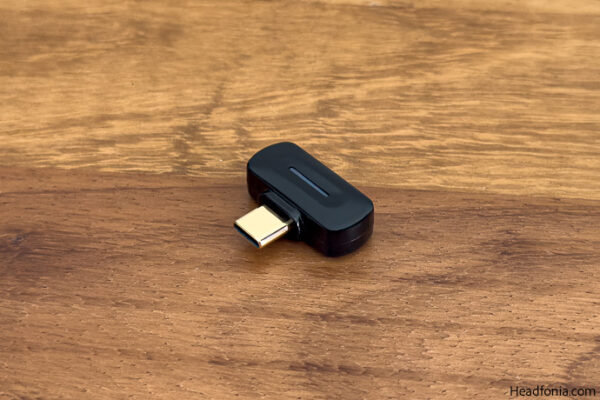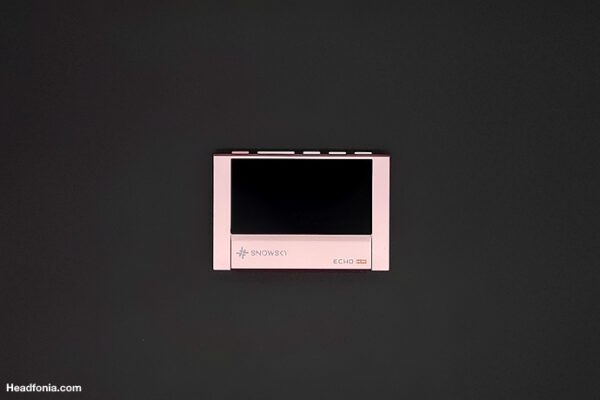If Google is showing you this page directly, click here to go to the start of the article.
Sound / Performance
For this chapter I used the Wind from a large number of portable as well as desktop sources. From the EarMen L-Amp to the Luxsin X9 and SP3000.
Let’s not forget that we’re talking about a headphone here which is selling for $20 USD. Don’t expect it to perform like a Sennheiser HD 560S in example.
At the same time I have really enjoyed listening to the Wind ever since I got it, and it has brought me more joy than a lot of the gear I recently reviewed.
General
The Wind’s tuning is neutral, but more forward sounding with a focus on upper mids and treble.
Its sound stage is quite good for a small semi-open back headphone with drivers of this size. The airiness from top to bottom is really nice, even if the top and bottom ends don’t extend very much. It’s a very natural presentation.
The technical level is where the Wind really suffers, and the precision, PRaT, decay and extension are really limited here. If you like depth and layering, this really is not something the Wind is strong at.
Another point of improvement is the control. The Wind doesn’t sound tight or very precise. At louder volumes you will also notice the driver starts to have trouble and you’ll get some distortion. Personally I don’t listen to loud volumes so this doesn’t really bother me.
Playing loud is not something the Wind does well either, as it will sound forced and distortion starts to kick in.
The stereo imaging is something that FiiO managed to get right and it’s a pleasure to the ear. Overall the FiiO Snowsky Wind is more about musicality and fun than it is about performance.
I have seriously enjoyed listening to my favorite tunes on the Wind. Its musical delivery (even if not technically strong) is engaging and enjoyable. Especially if you like more forward placed vocals and a livelier top end.
Swapping the cushions does allow you to tune the sound a bit more to your liking and the source also plays an important roll here, but more on that later.
Sound – Classics
The bass is mostly all about mid bass. Bass is not the weightiest (depending on the choice of red vs black also) or the tightest. Bass is not very punchy an refined/defined but it is present enough to enjoy, especially for an on ear design.
Sub bass is not really present here as you can also see in the FR. A little bass boost does help here, using an EQ or preset (L-AMP) will help you if you are a fan of a bass heavier presentation. We’ll get into it later but the Porta Pro does score better here.
The mids are also lighter in presence and they don’t have the most weight or presence. The mids are very spacious and airy and that does give them a natural presentation.
Depth and layering – again – are not very present here and there is a clear focus on vocals, which have a more forward presentation. I do like lower pitched male and female vocals here.
The top end is very energetic, lively. Depending on the recording it can go to the harsher, sibilant side. It of course also depends what you like.
I can appreciate treble energy but this absolutely isn’t the case for everyone, and in this headphone it is rather abundant. The black pads do help with that and they even out the sharpness, delivering more with body and bass presence.
The Wind’s top end also depends on your musical preference as well as the recording. (Try LIVE – Overcome, on the L-AMP). The Wind also takes from your amp and source, and this can certainly help you to keep things under control and tune the Wind to your liking. More on that later
That said, I do find the orange pads to deliver the relaxed sound FiiO promises, as it brings the most balanced presentation. And that takes us to the cushion difference!
Sound – Pads
Orange pads
The flashy orange set according to FiiO delivers a more relaxed sound. Relaxed here basically means a more balanced sound. But even within this balance (see above) you still have the lighter weight and vocal and treble focus.
Black pads
The black pads on the other hand give you a powerful sound with bass robustness. This translates in a bit more body in the bass region, but the difference is not night and day.
It however does help to reduce the top end energy and sharpness, but it is a very v-shaped signature
Personal Preference
For me the optimal pad would be a mix between orange and black, where you get the extra bit of bass body and a slightly softer top-end. If I have to choose between both, I will take the Organge pads, as they are most balanced and spacious sounding.
Sound – Matching
Note that I am using the Orange pads for this section. The FiiO Wind has a 32Ohm impedance and 101dB/mW(@1kHz) Sensitivity.
That in theory should make it an easy to drive headphone, but I do notice that the volume has to go up quite a bit on several sources (SP3000T in example, as well my OnePlus Open using the TC35 Pro from ddHiFi0. That said, all tested sources had more than enough power to drive the Wind.
My favorite source for the Wind is the EarMen L-AMP. With its tube flavor it adds some smoothness to the presentation and the L-Amp offers the possibility to add additional bass. I personally prefer it without extra bass, but there is the option.
Driving the Wind with the brand new Luxsin X9 is overkill, but it actually does sound good and it allows you to EQ as well (internet connection needed). From the AK SP3000T I liked the Hybrid output most, as it delivers the best balance for the Wind.
When driven from my laptop directly, the Wind doesn’t sound the very best but the TC35Pro fixes stat. Also from my OnePlus open, using the ddHiFi TC35Pro works very well. The Wind sounds full with punchy bass and the stereo imaging is excellent. It next to the L-Amp is my favorite source for using the Wind on the go.
TL;DR: The FiiO Wind does allow you to tune the sound by using a different source or amplifier.
Sound – Koss Porta Pro
For this Section I used the EarMen L-Amp, streaming music from Tidal. The orange pads are on the Wind.
Officially the Koss Porta Pro sells for $49.99 USD but it can be found for as low as $35 USD. That means it is almost double the price of the Wind, so I do expect more from it.
I can’t exactly remember what box the Koss came in, and Koss has delivered them in many different ways over the years. Don’t forget the Porta Pro has been around since 1984!
I for this review bought brand new pads for the Porta Pro because the original ones had completely deteriorated. I bought 5 sets for like 8 Euro with overnight delivery, so it was a no-brainer.
From a design point of view the Porta Pro looks similar but it actually is quite different. The sliding headband, comfort zone setting and side cushions immediately catch your eye.
The Koss does share the swiveling cup system with the Wind, but the basic version does not have inline controls. Of course the Porta Pro also folds up nicely, which the Wind cannot do.
The build quality here is good and the headphone does look and feel more study than the wind does. Koss still offers a Life Time warranty on the Porta Pro, awesome!
Looking at comfort the Porta Pro is heavier but still very comfy and it comes with better side pressure because of the added cushions on the side. Just watch out for your hair when adjusting the head band. Isolation and sound leak wise, both headphones are on the same level.
The drivability of the Koss is almost the same, even if the Porta Pro has a 60 ohm impedance. Practically I find it needs less power to sound as loud as the Wind, so it is easier to drive. And that brings us to the performance.
The Koss costs more but it sounds quite bit better as well. Where the wind sounds light, thin and sharp in the top end, the Koss sounds full and warmer. You get more bass and sub bass presence, as well as fuller mids, a softer vocal presentation and a very soft top end.
The tuning of the Wind and Porta Pro couldn’t be more different actually. I do feel the Wind has the better spaciousness, airiness and sound stage width, but both units don’t score very well on technicalities.
For me it is easier to listen to the fuller and warmer Koss, and that’s probably the case for most people. It’s very musical, easy to the ear and there is bass and body without ever sounding harsh. It’s just more ear pleasing.
No the Koss isn’t tight, fast or precise sounding but it’s been around for 40 years and still thousands of people still love the typical Porta Pro sound. That means it’s that good and I doubt we will be talking about the FiiO Wind in 40 years.
Conclusion
With the Snowsky brand, FiiO likes revisiting old classics. In this case with the Wind it takes us back to an era where headphone technology compared to now was nowhere.
While the Wind is very cheap and esthetically pleasing, I do have some issues with it from a technical point of view and its performance. On the other hand, the Wind is only $20 USD, and to bring back decade old memories that’s a small price to pay.
If you’re purely going for sound quality, the FiiO Snowsky Wind might disappoint with its typical tuning, but I also had a lot of fun with it from the moment it arrived.
If you’re looking for a lightweight on-ear headphone which is easier to like and listen to, I would still recommend the Koss Porta Pro. But if you have to stick to the $20 USD budget, then the Wind has an excellent price/quality ratio.
Summary
PRO
- Cheap
- Light weight
- Pads allow tuning
- Stereo imaging
- Sound stage
- Price/Quality ratio
CON
- Light sounding
- Sibilant top end
- Vocal forwardness
- Light in mid and bass body







